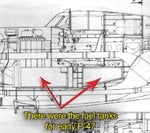Marshall_Stack
Senior Airman
If the P-47 didn't have "wet wings" until the P-47N, where did the earlier versions have their fuel? Was it in the fuselage behind the pilot?
Also, does anyone know anything about the XP-47F? It was a P-47D with laminar flow wings. All I can find on it is that it crashed and killed the pilot. It doesn't say if this was the only flight. I am curious about the performance...
Also, does anyone know anything about the XP-47F? It was a P-47D with laminar flow wings. All I can find on it is that it crashed and killed the pilot. It doesn't say if this was the only flight. I am curious about the performance...




